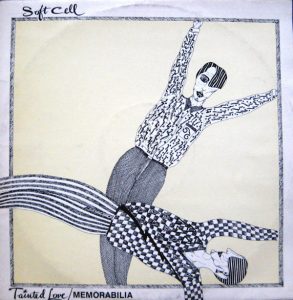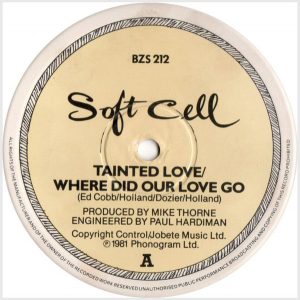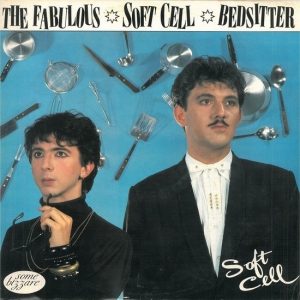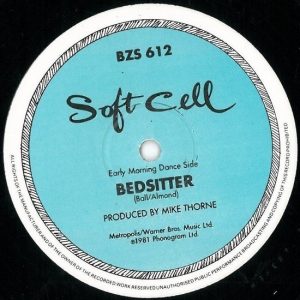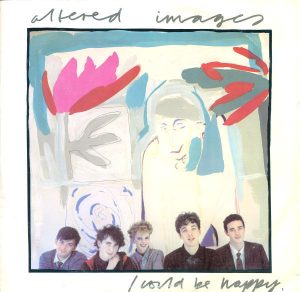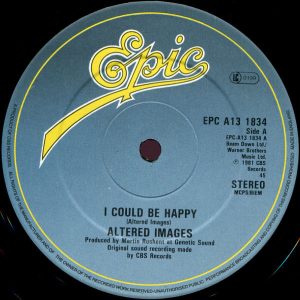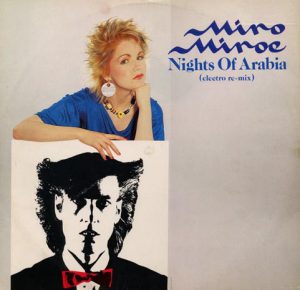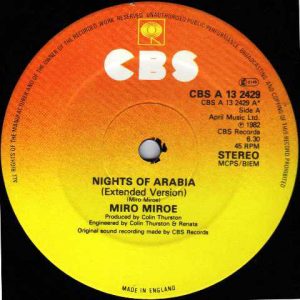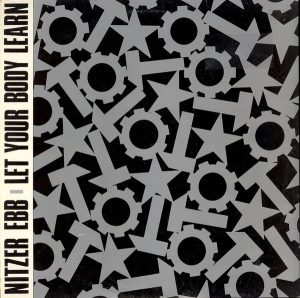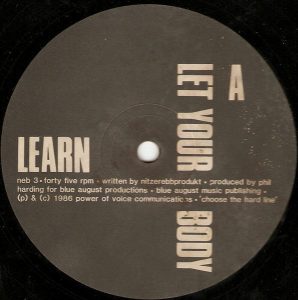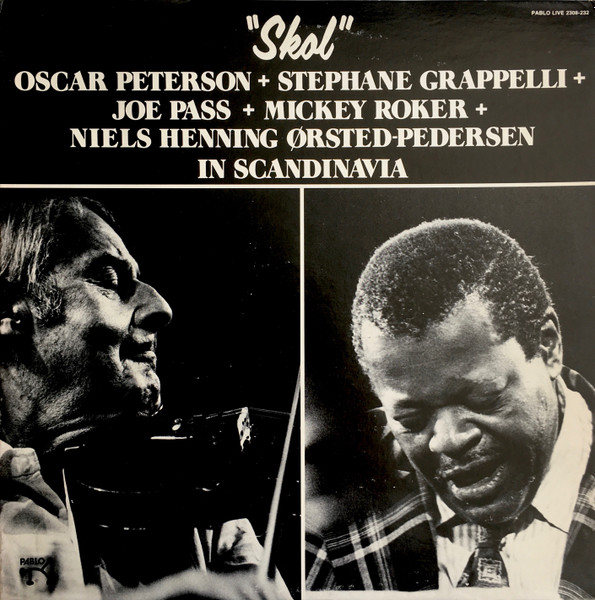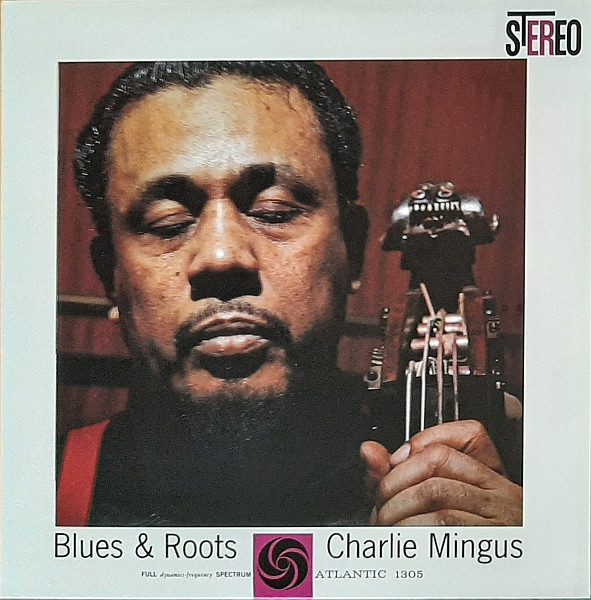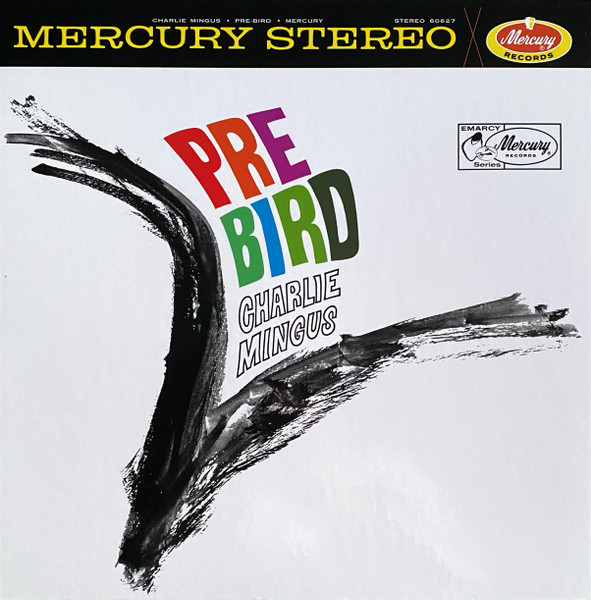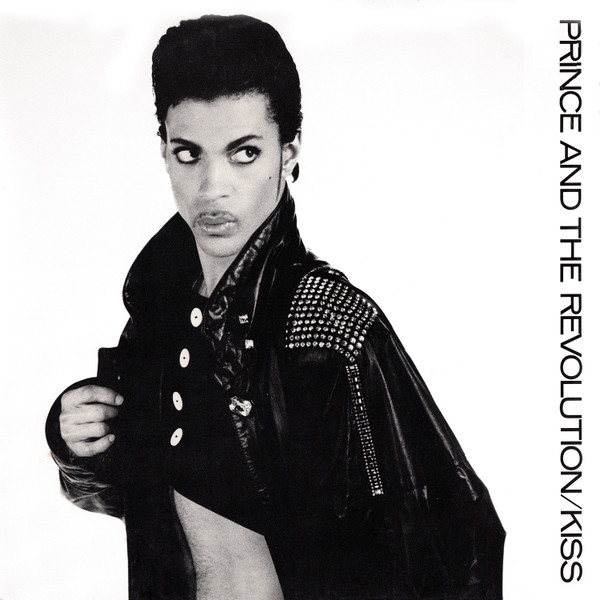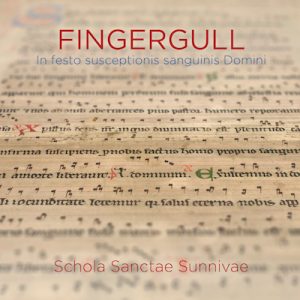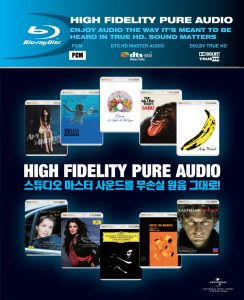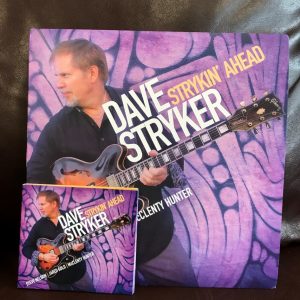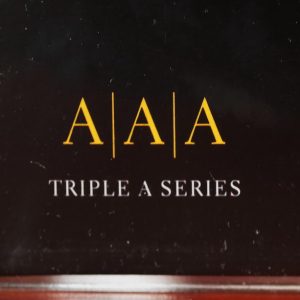In this Covid 19 pandemic, where many have suggested songs with either soothing or suggestive lyrics to wade through this difficult period, I chose instead to focus on five selections geared more towards escapism, dance and anxiety abandonment. So do yourself a favor, for the next 40 minutes or so, shut off the news, give your mind/brain a break, leave your audiophile-apprehensions at the doorstep and dance away on the dance floor!
131. Soft Cell, "Tainted Love / Where Did Our Love Go"/"Tainted Dub". Some Bizzare – BZS 212 (UK) (1981), 12", 45 rpm. Genre: synthpop, new wave, new romantic, alternative.
Originally a fervid upbeat flop featured on the B-side of a rare soul seven-inch single sung by Gloria Jones in May 1965 [Champion Records 14003], "Tainted Love" rose from the ashes in July 1981 when UK Leeds duo Soft Cell solidified their standing, while successfully putting their own stamp on it. By slightly slowing down the tempo, adding cool sounding synths, transposing the key from 'C' to 'G' for the singer's lower register, and juxtaposing the background vocals with the lead, the former's Motown-ish mood had metamorphosed completely. Harking back to the late 1960s mod scene and 1970s that thrived on obscure mid-1960s singles, Northern soul, as the Brits coined it, dominated the dance clubs in places like Manchester's Twisted Wheel and England's Wigan Casino just to name a few. Famous deejay Richard Searling carved out a copy from a store in Philadelphia and introduced it to his clubbers back home. Such was the—newfound—success that Jones tried her luck a second time by recording it anew, and slightly updating it for her 1976 LP Vixen [EMI EMC 3159] but to little avail. Instrumentalist Dave Ball and singer Marc Almond—both ex-Polytechnic pals and seemingly deejays prior to the formation—were into Northern soul and loved the track, which they played as an encore for their live shows. Integrating and segueing the H-D-H-penned "Where Did Our Love Go"—The Supremes' first hit single in June 1964 [Motown 621]—at the exact midpoint of the twelve-inch version of "Tainted Love" was only second nature and proved artistically brilliant. Leading up to this transition, there is a forty-second synth sweep deconstructed as follows: 4 bars maintaining a steady fixed pitch, followed by 8 bars of descending pitch, performed utilizing the unit's pitch-control ribbon. Almond's vocals were captured with a Neumann U87 through a EMT plate reverb, and a compressor on his first run-through in one single complete take. Roland drum machine for the kick and snare, separated and heavily EQed, a Synare drum furnished the signature "pink-pink" percussive sound, plus a Korg synth for the bass, served as the basis of the track while producer Mike Thorne's custom Synclavier served duties for the piano, with a late-1960s Serge Modular synth and Moog 3C patched in for some sounds. The dub version on side B was more a free-for-all improvised experiment which gives it a certain edge. Paul Hardiman engineered the song in Studio Two at Advision Studios in Central London on a 24-track MCI deck, and mixed mostly mono—intentionally for focus on the dance floor—on a 32-channel Quad Eight Electronics automated desk—imported from California at the height of the short-lived quadrophonic craze. Monitoring relied on big JBL 4350s in a 20 by 30 foot room. It took only a couple of days to complete the track, dedicating a full day for mixing. George Peckham aka Porky cut the lacquer at Portland Studios in London. Pressing was done at PRS Ltd.—Polygram Record Services Limited in Chingford, Greater London. The sound sports a nice springy bass punch modulating the meters, and is generally well balanced tonally with some dynamic compression in the vocals along the way but nothing unduly.
132. Soft Cell,"Bedsitter". Some Bizzare – BZS 612 (UK) (1981), 12", 45 rpm. Genre: new wave, synthpop, new romantic, alternative.
"Bedsitter" was the follow-up single to "Tainted Love" released at the end of October, some 3 - 4 months later. Although it did not attain the level of airplay, fame and sales of their previous hit, I have a slight sonic and musical preference for it. Perhaps it is the guitar-sounding riff—most probably played by a synth since there are no guitar credits listed—that appeals more to my new wave affection than a typical early 1980s synthpop track. In effect, the song's style and stylistic touches tends towards The B-52's debut album [Warner Bros. BSK 3355] and The Monks' "Skylab (Theme from the Monks)" track from their LP Bad Habits [EMI EMC 3309] with a 1960s twangy surf Ventures like sound. Both Soft Cell songs share about the same fast tempo around 144 bpm, but "Tainted Love" may appear subjectively slower due to the vocal phrasing structure, and—for all the deejays out there—they also mix well together. Mike Thorne reprised his role as producer but this one was recorded by engineer—and future Senior Vice President of SSL (Solid State Logic)—Don Wershba in Studio C at Mediasound in Manhattan, NY, and at Candem Cell, London. Two custom built 12-channel boards were paired to accomodate the 24-track 3M tape deck—in addition to EMT plates, Lang and Pultec EQs, Teletronix LA2A tube compressors, UREI 1176 peak limiters, Eventide 910 harmonizer, and Lexicon digital delay devices. Electronic musical instruments included a Roland 808 drum machine in conjunction with the Synclavier. Neumann U87 was retained for the main mic—mostly done at a certain distance to include the natural room sound—wherein Almond doubled his own vocals, striving more for emotional intensity and integrity than technicality. Monitoring alternated between Yamaha NS-10s and Altec 604Es. Harvey Goldberg—who went on to become the "Broadcast Music Mixer" for The Late Show, first with David Letterman, and continuing with Stephen Colbert—mixed it. Based on the corresponding album Non-Stop Erotic Cabaret [Some Bizzare BZLP 2], Arun Chakavertz and Jack Skinner were credited as mastering engineers but it is unclear if this 12-inch single was also. Side B's "Facility Girls" is not worth much attention. The lacquer was cut at the Master Room in London perhaps by Porky, who is credited only for the track on side B. Pressed by PRS Ltd. The overall sound is well balanced, the synths slightly crisp, with just a hint of warmth.
133. Altered Images, "I Could Be Happy"/"Insects" + "Disco Pop Stars". Epic – EPC A13 (UK) (1981), 12", 45 rpm. Genre: new wave, alternative, synth pop.
Released at the very end of 1981, "I Could Be Happy" by Scotland's Altered Images invoked the bubbly spirit of Blondie's new wave punk prior period. By extension, one could probably draw a parallel line between both band's respective singers—Clare Grogan and Debbie Harry. Indeed, one can find certain rapprochements relative to this track and the latter's 1979 hit "Atomic" from Eat to the Beat [Chrysalis CHE-1225]. There are some slight stylistic similarities with A Flock of Seagulls' "Telecommunication" [Jive T4] three months earlier. Strikingly the first half of the track is instrumental before we get to hear the first verse which is not uncommon with other Martin Rushent productions such as The Human League, and the special remixes done for The League Unlimited Orchestra's Love and Dancing [Virgin OVED 6] released in July 1982. A nice syncopated beat break with double-claps awaits us around the 3.30 mark, making for great mixing opportunities, then the bass run comes in, followed by the U2-ish guitar riff, and a last return of the vocals. The B-side sports two short songs. Starting with "Insects" which has a moderately slow tempo and is quite repetitive, and only fair. In contrast "Disco Pop Stars" has a nervous ska style tempo, sounding like a cross between early Blondie and A Flock of Seagulls' 1982 debut LP [Jive HOP 201], and is more interesting. It was produced at Genetic Sound aka Rushent's Mansion in Berkshire, UK. The lacquer was cut at The Town House in West London on Neumann VMS 80 lathe, SX74 cutter head, and SAL74 drive amplifiers. Again the sound is mostly balanced with fast energetic kick, nice percussive panning effects, and moderate compression in the mids and highs.
134. Miro Miroe, "Nights of Arabia" (electro re-mix or Extended Version). CBS – A 13-2429 (UK) (1982), 12", 45 rpm. Genre: electropop, synthpop, new romantic, alternative.
Back in 1982, British producer, composer, arranger, saxophonist, and keyboardist Ian Ritchie enlisted his then girlfriend Berenice Nally to sing lyrics for the duo's short-lived formation Miro Miroe. Despite signing with major label CBS Records, they ended up being remembered or rather forgotten as a "one hit wonder". Which is unfortunate, given the song is one of my favorites from that period and this edgier alternative genre mixing electropop with new romantic. Nearing 140 bpm, the staccato synth bass-kick intro establishes the main motif upon which it progressively propels the listener onto an energetic, melodic, modal trip that slowly builds up in intensity, and harmonic complexity, combining cool sounding arpeggio synth textures with Arabic free-flowing sax. Similar to the previous entry the first half of the track is nearly instrumental before we get to the first verse where Nally comes in. Ian Curnow is credited for additional keyboards. Colin Thurston produced and engineered it—the latter augmented by Renata. Nickz aka Nick Webb cut the lacquer while CBS Pressing Plant, Aston Clinton (Aylesbury) pressed the 12-inch single. The sound is tight, fast, and neutrally balanced with some moderate dynamic compression during certain passages, though lesser so than many from that early 1980s era and what would become worse a few years further down the decade. Side B sports a shorter version of the main track followed by "Do Androids Dream" which is totally another style, resembling more an old Kraftwerk type of synthpop-new wave flavor.
135. Nitzer Ebb, "Let Your Body Learn"/"Get Clean". Power Of Voice Communications – NEB3 (UK) (France) (1986), 12", 45 rpm. Genre: EBM.
The British trio consisting of school friends David Gooday, Vaughan "Bon" Harris, and Douglas McCarthy started with their first self-release demo Basic Pain Procedure in 1983, originally on cassette format only—although later reissued on a limited edition vinyl [Pylon 30] in 2012. The hard aggressive repetitive minimalist synth-style of the latter could be best described as an Essex version of Düsseldorf's D.A.F—so much was the musical appropriation. Teaming up with producer Phil J Harding, they released their first single "Isn't It Funny How Your Body Works?" [Power Of Voice Communications NEP1] in early-1985, and accordingly, codifying the DNA of the EBM–Electronic Body Music—subgenre. In May 1986 the group came out with what I consider their best song: "Let Your Body Learn" in its 12-inch single version. From its commanding militaresque vocal intro—"Fast beat the feet, Fast fall the hands" followed by a mean-sounding sixteen-beat drum loop that is present pretty much 'til the end, and shortly by a low frequency sequencer run—"Meld in the music, The music of drums, Choose the fast beat, Choose the hard line"—unless you've got glue under your shoes, the driving rhythm catapults you to the dance floor. "Get Clean" on side B is less known but is interesting nevertheless, featuring at first a medium tempo four on the floor kick rhythm then switching into a double-time or eight-note pattern, and alternating along the way while lyrics keep repeating in pairs. Harding produced, recorded it at Greenhouse Recording Studio, and mixed it at PWL Studios—aka the 'Hit Factory'—both places located in London. Though marketed as a 'made in UK' release, it is in fact pressed by MPO (Moulages et Plastiques de l'Ouest) in France. The sound is near-neutrally balanced but slighthly on the lean side, with fast, tight kick, with some moderate dynamic compression that on some systems may approach minor listening fatigue—think narrow tower-type baffles—and thus is more enjoyable on big club-style speakers.
For more from Claude Lemaire go to his blog...
http://soundevaluations.blogspot.ca/




